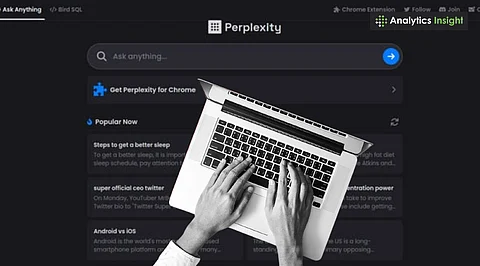Perplexity AI is transforming the landscape of content discovery by prioritizing structured, concise, and authoritative information from trusted sources. As digital content continues to evolve, the platform has introduced new rules that emphasize entity-based relevance, freshness, and clear formatting. This shift highlights the importance of Generative Engine Optimization (GEO), which is essential for enhancing discoverability in an AI-driven environment.
The platform distinguishes itself from traditional search engines by summarizing answers, citing sources, and rejecting low-quality content. This change signifies a fundamental shift in ranking metrics: it is no longer sufficient to simply appear on the first page of search results. Instead, being referenced as the definitive answer has become the new standard for visibility. For journalists, educators, bloggers, and brands, the focus has shifted from mere discoverability to establishing trustworthiness and being recognized by AI algorithms.
Understanding Perplexity’s Ranking Mechanism
At the core of Perplexity’s ranking process is a machine learning system known as L3 reranking. This three-tiered algorithm assesses semantic depth, topical authority, and clarity after retrieving initial results. This approach marks a significant departure from conventional search engine optimization (SEO) strategies, which often emphasize backlinks and keyword density. The algorithm tends to favor content that includes named entities—such as people, organizations, events, or concepts—thus prioritizing contributions from recognized authorities.
For instance, when discussing climate change, a quotation from reputable organizations like NASA or the Intergovernmental Panel on Climate Change (IPCC) carries more weight than a statement from a lesser-known blog. Consequently, websites such as GitHub, Amazon, Wikipedia, and Coursera frequently dominate Perplexity’s output due to their established credibility, which experts refer to as a “trust tier advantage.”
Building Domain Credibility
Independent publishers looking to compete with these dominant sites must focus on enhancing their domain credibility. Key strategies include publishing original research and maintaining transparent editorial standards. Elements such as verified authorship, fact consistency, and adherence to recognized data sources contribute significantly to an algorithmic trust rating.
The structure of content is also playing an increasingly critical role in its discoverability. Perplexity favors well-organized pages that feature easily navigable formats, such as FAQ sections and question-based headings. Disorganized layouts, dense walls of text, or hidden insights can hinder a page’s performance on the platform. As a result, using clear HTML structures, readable headings, and concise formats can improve the chances of surpassing Perplexity’s filters.
The Importance of Recency and Multimedia
Recency is now more crucial than ever. Perplexity favors content that has been updated within the past six to twelve months, especially for rapidly changing topics like AI, politics, finance, or health. Early engagement metrics, including clicks, shares, and backlinks, can also influence visibility on the platform. Timeliness is vital; breaking news that is quickly referenced by mainstream platforms can significantly enhance a piece’s initial visibility.
While Perplexity is predominantly text-focused, the inclusion of multimedia elements such as videos, infographics, and charts can provide an additional advantage. Relevant visual aids, particularly those linked from respected sources, help improve content ranking. This trend reflects broader patterns observed in digital content consumption, where visually enriched pages tend to attract greater engagement.
Embracing Generative Engine Optimization
As artificial intelligence increasingly becomes the default interface for search, a new paradigm known as Generative Engine Optimization (GEO) is emerging. GEO emphasizes the importance of making content understandable to AI models rather than solely to human readers. This involves organizing answers in a question-answer format, utilizing schema markup for FAQs, anticipating follow-up questions, and adopting simple, declarative language.
The evolution of platforms like Perplexity signifies a pivotal moment in content creation. We are entering a post-SEO era where the ability to engage both human audiences and AI summarizers will be paramount. Journalists, publishers, and content creators face both challenges and opportunities in this landscape. Success will favor those who write clearly, refresh content regularly, organize information effectively, and convey confidence in their expertise.
The key takeaway for content creators is to adapt to these new standards. As the digital ecosystem evolves, being quotable and trustworthy in the eyes of both algorithms and human readers will define digital relevance in the years to come.
